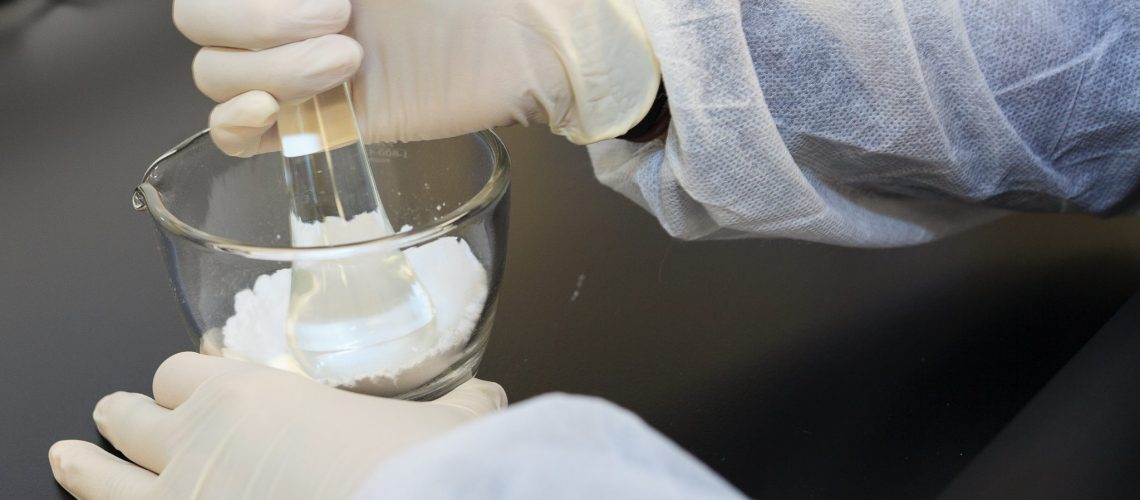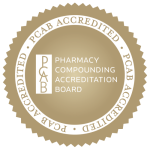There are about 86 million pet cats in the United States representing 35% of households. This considerable number implies a great need for services to provide care to felines; veterinary medical care is just one of those services. As with any other species, therapies for cats vary significantly in the different drugs, doses, frequencies, and routes of administration.
The commercially available medications on the market do not satisfy the variety of the therapeutic needs encountered when treating cats. About 80% of the drugs prescribed for cats are made up of off-label use of approved animal and human drugs. This means that most drugs prescribed for cats are officially considered compounded medications. Thus, prescribing for cats requires at least at a basic level of compounding knowledge from veterinarians. Feline Compounded Medications can be used to offer a wider variety of options to individualize the treatment for feline patients or to provide viable solutions for difficult to treat cases in aging cats. To better understand the possibilities, we’ll discuss a few common conditions and their treatment options in cats.
Common Feline Conditions and Their Treatments
Feline Hyperthyroidism is one of the most common conditions in older cats. Untreated it will lead to severe morbidity and death. Lifelong pharmacologic therapy is the most common treatment option. Methimazole is one of the FDA approved medications, and it comes as tablets in two strengths. Many cat owners cannot manage the administration of methimazole tablets. Consequently, compounded oral liquid or transdermal gel dosage forms become the preferred forms of administration for the cat owners, as they are more easily accepted by cats.
The transdermal gel is applied to the hairless area inside the ear (pinna). Carbimazole is a prodrug for Methimazole. It is not offered as a commercially available medication, but compounded oral liquid or transdermal gel dosage forms can be prepared.
Feline Hypertrophic Cardiomyopathy is the most commonly diagnosed cardiac condition in cats. It is more prevalent in male cats 5-7 years of age. Some breeds are genetically predisposed to develop this condition. Clinical signs may or may not be present, but once accurately diagnosed, the treatment may consist of a variety of drug classes.
Angiotensin-Converting Enzyme (ACE) Inhibitors are represented by Enalapril and Benazepril. Both drugs are approved for humans and are used off-label in cats. Enalapril can be prepared in combination with drugs of other classes needed in the treatment of hypertrophic cardiomyopathy, in flavored oral oil suspension form for example, based on the feline patient’s therapeutic needs. Benazepril is a safer alternative to enalapril due to its nephroprotective effects in cats with renal insufficiency. It is only available through compounding in various dosage forms, drug combinations, flavors, etc. that are appropriate for treating feline patients.
Diuretics are another class of drugs needed in the treatment of the hypertrophic cardiomyopathy. Furosemide – the diuretic of choice among veterinarians – is available in an FDA approved tablet form in only two strengths. It can also be compounded in other dosage forms and combined with other drug classes as necessary. Other diuretics, such as Hydrochlorothiazide and Spironolactone are available as off-label uses of approved human drugs.
Anti-thrombotic medications represent another class of drugs needed as part of the treatment of this disease. Aspirin must be compounded to achieve the doses needed for cats. Clopidogrel –the antithrombotic drug of choice in cats – must be compounded for cats that require lower doses than those used in humans.
Antiarrhythmic agents may be part of the treatment in cats with hypertrophic cardiomyopathy. Atenolol and diltiazem are commonly compounded in various strengths, combinations, and flavors based on the cat’s needs and preferences. Pimobendan is an inotropic drug that can be used in cats and as an off-label medication approved for dogs.
Feline Lower Urinary Tract Disease (FLUTD) refers to a group of common conditions that affect the cat’s urinary tract. These conditions are:
- Feline idiopathic cystitis – about two-thirds of cats younger than 10 years of age with FLUTD are diagnosed with this disorder.
- Urinary tract infections (UTI) –manifested by a variety of symptoms that can help with the diagnosis before the causing pathogen is determined. Pathogens are usually bacteria.
- Uroliths – represent another disease included under FLUTD – and it consists of stones located in the urinary bladder or urethra that may or may not obstruct the urinary tract.
- Urethral obstruction – is a medical emergency. It occurs when the urolith blocks the urethra, and the feline patient cannot urinate.
It appears that male cats are more prone to FLUTD because of their anatomical features.
Treatment of FLUTD must be thoroughly individualized based on causative factors, presence of bacterial infection, frequency of occurrences, and risk for urethral obstruction.
Non-obstructive FLUTD treatment is multi-modal requiring various classes of drugs. Most of the drugs needed must be compounded to provide doses suitable for cats, as there are very few approved therapies in cats with this condition. The main focus of the treatment is to reduce the feline patient’s stress. Despite the variety of available approved anti-anxiety human drugs for off-label use in cats, many of them have serious side effects or are not efficacious. Thus, Fluoxetine remains the drug of choice to reduce the stress in cats with FLUTD. Fluoxetine is approved for humans and used off-label in cats.
Analgesics are used when pain is part of the symptoms in cats with FLUTD. Butorphanol tablets come in a few strengths and are FDA approved for use in dogs as a cough suppressant. In cats, Butorphanol is used off-label for analgesia.
Buprenorphine is an FDA approved drug as an injection, for the control of postoperative pain in cats. When it is administered into the side of the cat’s mouth for buccal (transdermal) absorption in the compounded version, it has been shown to be as effective as intravenous administration.
Antispasmodics are a necessary class of drugs as part of the treatment of FLUTD. Prasozin and phenoxybenzamine approved for humans are used off-label in cats. Both drugs must be compounded when used in cats.
The examples presented above are some of the most common conditions for which feline patients require a visit to a veterinary office. They clearly demonstrate the need for veterinary compounding pharmacy services both for common therapies and hard to treat cases in cats, particularly in those who are aging.
HALDEY Provides Custom Compounding Solutions
For more customized therapeutic options for other conditions or hard to treat cases in feline patients, a successful and caring veterinarian should have a collaborative relationship with a reliable compounding pharmacy.
Let HALDEY Pharmaceutical Compounding be that choice of veterinary compounding pharmacy for your practice’s needs. Contact us today for a detailed evaluation of your compounding requirements.




